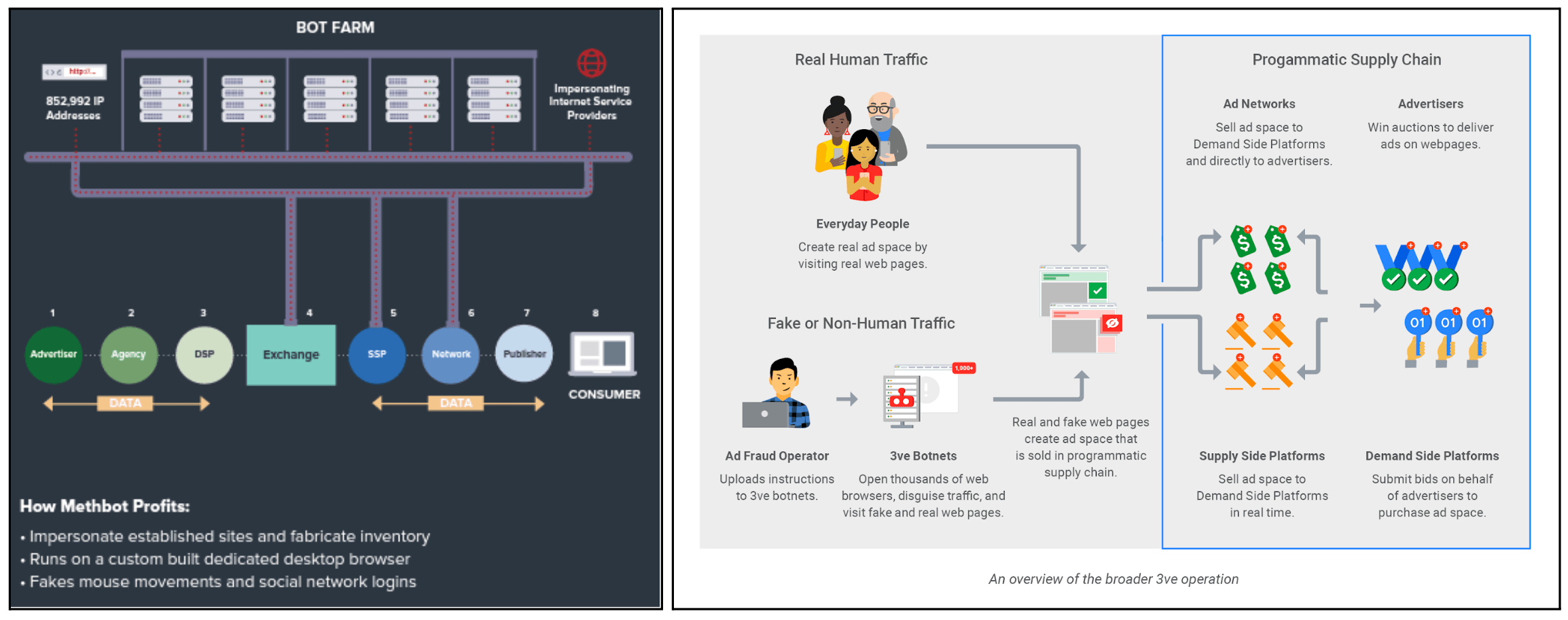Improving Automation and Accessibility Drive $100 Billion in Projected Ad Fraud Losses

Ad fraud, driven by automation, is a pervasive issue in online advertising, involving the inflation of performance metrics through automated bot software and tools. The increasing accessibility of automation solutions has lowered barriers to entry for fraudsters, making ad fraud a more significant threat. Ad fraud results in significant financial losses, estimated to reach $100 billion by the end of 2023, directly impacting advertisers and publishers. Consequences include skewed metrics, inaccurate targeting, and deceptive lead submissions. The credibility of the programmatic advertising industry is at stake, posing a risk of brand impairment for ad tech companies and intermediaries.
 Despite differences in execution, Methbot and 3ve were both sophisticated ad fraud operations that relied on the establishment and maintenance of formidable bot infrastructure capable of imitating human activity (Source: HUMAN; Google, HUMAN)
Despite differences in execution, Methbot and 3ve were both sophisticated ad fraud operations that relied on the establishment and maintenance of formidable bot infrastructure capable of imitating human activity (Source: HUMAN; Google, HUMAN)
To mitigate ad fraud, stakeholders are urged to implement automated solutions that detect and prevent invalid traffic (IVT). Ensuring advertisers access information for identifying ad spend inefficiencies and employing threat intelligence is crucial. Looking ahead, the impact of ad fraud is expected to grow alongside the online advertising market, with artificial intelligence (AI) playing an increasingly significant role.
Automation and ad fraud, directly linked with programmatic advertising, directly impacts advertisers and publishers, causing distorted metrics and misleading analytics. Leveraging AI to detect and prevent invalid traffic and ad fraud is crucial. The tools and techniques employed by fraudsters, accessible and likely to become more sophisticated with AI development, require stakeholders to adopt proactive strategies in recognition of the evolving nature of ad fraud and cybercriminal tools.
To read the entire analysis, click here to download the report as a PDF.
Related News & Research
